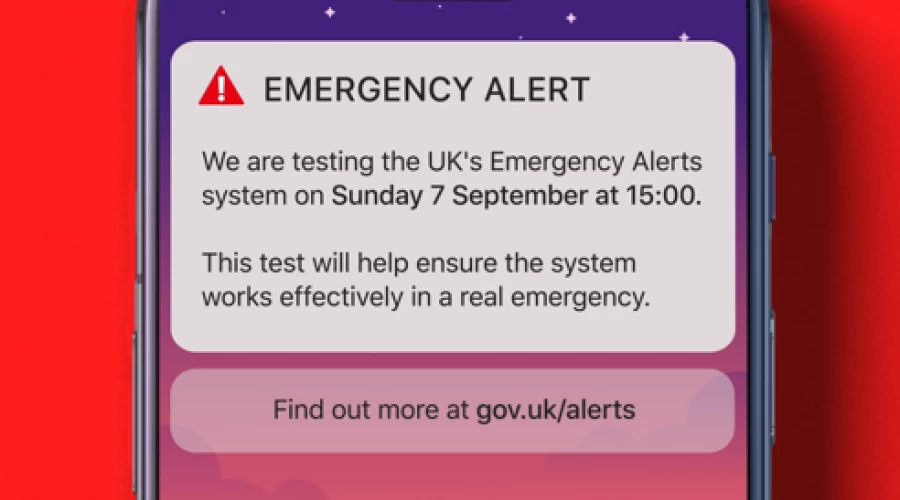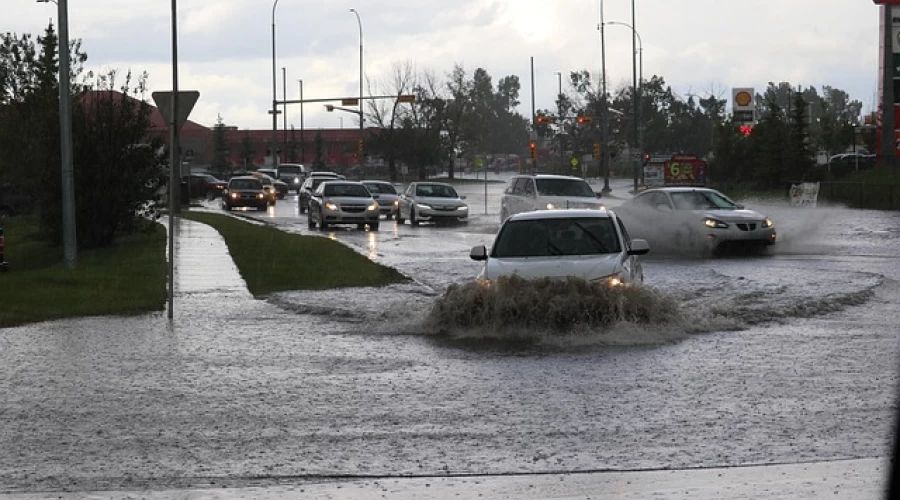Flooding
- Risk Level: Very High
- Risk Ref. #: NRR51
- Likelihood/Impact: 3/4
- Download the Risk Register

Introduction
Flooding is probably the most prominent of all our risks. The River Avon runs through the north of the county and is prone to flooding at Malmsbury, Lacock and Bradford on Avon. Salisbury in the south can be prone to flooding as five different rivers converge there. Additionally, the geology of Salisbury Plain and its surrounds makes the area liable to ground water flooding. Flooding is a very visual risk, and pictures/videos of places we know so well being submerged can be quite frightening and thought provoking for us all. Actually, most of the flooding we experience is surface water flooding following a heavy downpour and is short lived.
Not all flooding is the same and the way it affects one person is different from another. One thing you can guarantee however, is that it is destructive and devastating, with many communities suffering life changing effects from its aftermath. People lose their homes, belongings, businesses and livelihoods, which can lead to severe long-term psychological impacts.
Interesting Facts
- The deadliest flooding was in 1931 in China which caused the deaths of between 2,000,000 and 4,000,000.
- Currently 1 in 6 homes in the UK is at risk of flooding.
Local Risk Rating
Flooding is assessed as Very High risk on our Community Risk Register. Take a look at the table shown in What is Risk? to understand why.
- Impact: Significant (4)
- Likelihood: Medium (3)
- Rating: Very High
What is it?
Most of us consider flooding to be related to rivers, but there are a few more types of flooding that you need to know about.
River Flooding
River flooding can often be referred to as fluvial flooding and is a very common type of flooding in the UK. River flooding is caused by the flow exceeding the banks (sides) and causing damage to the surrounding area, buildings and environment. River floods are often initiated from water runoff caused by rain running off nearby land, this is either to due already saturated land (like a sponge that already wet and can’t take any more water) or after long periods of no rain when the ground is too hard to absorb much water.
River flooding in general also tends to quicken the pace of the river and therefore makes it become more destructive. Larger objects than normal can be carried in a flooded river and this is often why you’ll see a large displacement of possessions and debris after a flood.
If you want to check the fluvial flood risk in your area, please check here
Surface Water Flooding
Surface water flooding (sometimes referred to pluvial) is likely to have affected everyone at some point in their lives. You don’t need to be near a river or the sea to be at risk of this. Put simply, surface water flooding is where you have heavy rainfall that is unable to drain away. This is often caused by blocked drains or where runoff collects in a particular place. In some ways it could be described as a very big puddle. Surface water flooding is an ever-increasing problem with climate change bringing heavier storms and construction replacing the more permeable grassland with impermeable surfaces (like tarmac). Due to the constant changes we go through, it’s difficult to predict exactly where surface water floods will occur, however these maps show you what the current predictions are from your area: Check the long term flood risk for an area in England - GOV.UK (www.gov.uk)
Groundwater Flooding
Groundwater flooding is one of the least understood and known flooding types, but is particularly relevant to us in Wiltshire. For this to occur, the water table (level of water in the ground) in the area must rise up due to heavy rainfall. Once the water table reaches ground level, it will start to seep through the surface and may cause flooding. This can be quite common in underground areas and can occur in places you wouldn’t traditionally expect it too like a hillside.
Groundwater flooding is much slower to occur than river or surface water and take days or weeks to occur after heavy rainfall; it may also last for several weeks or months.
Certain areas are more prone to groundwater flooding and this can be due to the type of bedrock in the area or how high the water table sits. Many people who suffer from groundwater flooding will already have pumps installed, and everyone can check the risk in their area (where data is available using the above link).
Sewer Flooding
Luckily, this isn’t a common type of flooding in the UK but can be very unpleasant If it does occur. It is highly dangerous mainly due to the presence of high levels of bacteria. Generally, it is caused by sewer blockages and is one of the main reasons why it’s so important to only flush the three P’s – Pee, Poo, Paper - down the toilet. For information of what you shouldn’t flush see this article: 20 things you should never flush down your toilet (surfertoday.com)
Reservoir Flooding
This is extremely rare in the UK and will be covered in our other article
Coastal Flooding
Not something we in Wiltshire tend to be too worried about, but something we do need to be aware of when we visit the coast on our days out. Coastal flooding is predominantly caused by high tides and stormy weather combining, leading to the overtopping of sea defences with seawater then encroaching onto the land. Anyone who surfs or goes out on the sea in boats will understand the immense power the sea has and therefore you can imagine what it is like when this power meets land and property.
Related News

Emergency Alert Test - Sunday, 7 September at 15:00
>1m read
Emergency Alert Test - Sunday, 7 September at 15:00
History
Where do you start with the history of flooding? There’s so many examples to choose from.
York Floods 2015
On Boxing Day in 2015 the City of York was flooded with the River Foss and Ouse breaking their banks. Thousands of properties were at risk with hundreds of people requiring evacuation from their homes.
For the residents of York this wasn’t a new occurrence with the city suffering flooding regularly over its most recent history. Flood defences get improved and adjusted over time as lessons are learnt from every storm or flood event that occurs, these are likely to become more critical as Climate Change causes further unpredictability to our climate in the UK.
Some of the impacts of flooding are quite obvious, people have severe and irreversible damage to homes, property and businesses. Often a flooded home can lead to not only the unpleasant smell with dirt left behind but also a completely ruined electrical infrastructure. These combined problems will result in a long-term requirement to vacate properties. This particular flood also caused the flooding of a BT exchange damaging equipment and cutting Wi-Fi and telephone connections to many York residents; the less obvious knock-on effect is that many businesses could then not take card payments.
It must be said that due to York’s history with flooding, residents do know some of the risks and have taken precautions. This is complements the work of the Council and other agencies, who continually work with everyone to prepare for and mitigate flooding.
What are we doing about it in the LRF?
As an LRF we concentrate on flooding as part of our daily responsibilities. We have a Severe Weather sub-group that considers flooding as core part of its business. The Local Authorities also have a variety of flood related forums and working practices which include working groups with councillors to specially look at known flood issues. On top of, this we have some specific flood plans for certain areas including Salisbury which includes working with communities to prepare for and mitigate against flooding in local areas.
We also regularly use flooding as a scenario when training and exercising with multi-agency partners. These events also include working with voluntary agencies who have additional capabilities that can assist us in a variety of different scenarios.
What can you do?
There are several things you can do too, and these include a variety of options:
- Understand the flood risk in your area using this link; Check the long term flood risk for an area in England - GOV.UK (www.gov.uk)
- Sign up to the Environment Agencies Flood warnings; Sign up for flood warnings - GOV.UK (www.gov.uk)
- Create a community Flood Plan
- Identify any flood risks in your community and let your Local Authority or councillor know so these can be reported
The most important piece of information however is to remember flood water is dangerous – you don’t know what’s underneath and even if you are wearing waders it’s not a safe environment to be in.
Downloads
Flood Risk
Flood Risk



